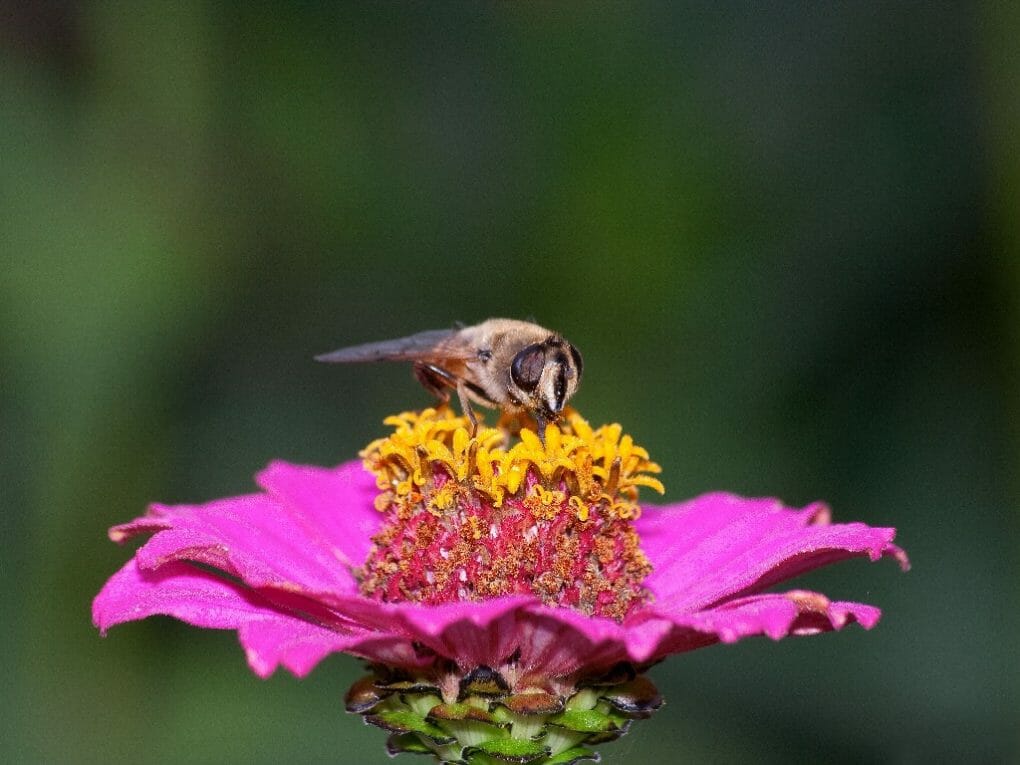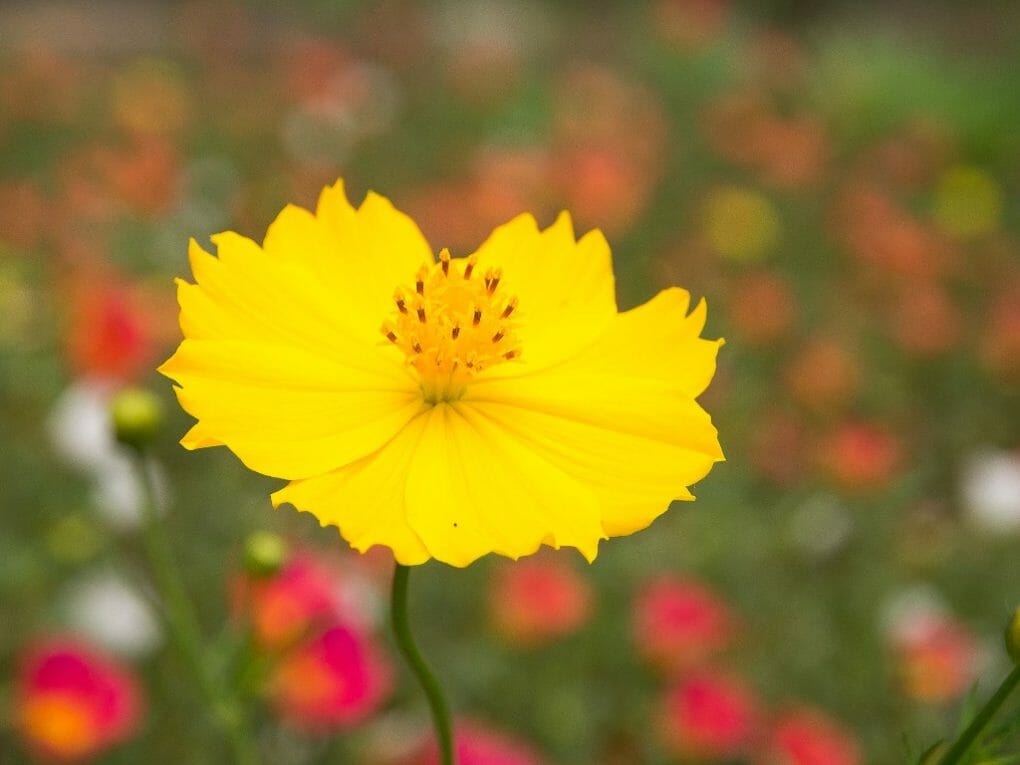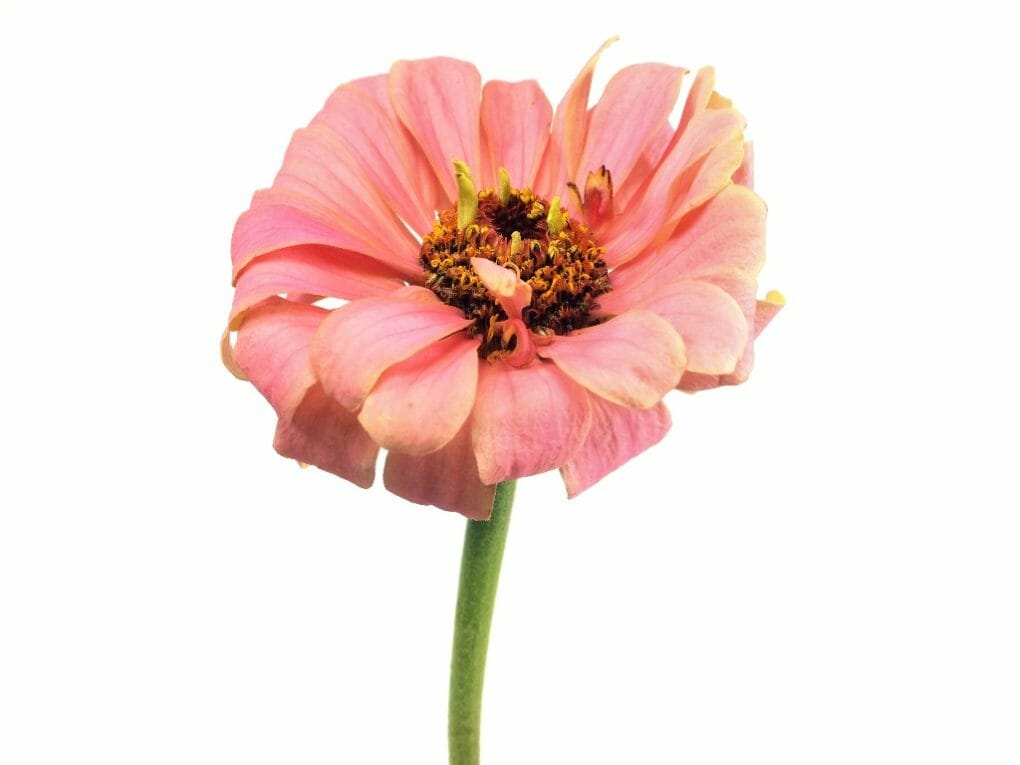When to Harvest Zinnia Seeds? What Zinnia Seeds Looks Like?

If the flower petals have turned brown and are beginning to fall off, zinnia seeds are ready to be harvested. This depends on the variety and typically occurs around weeks three or four of growth. When you know when to harvest your zinnias, go to the garden to take in their vibrant colors. Don’t discard zinnia flowers that lack petals if you find them. They might still be filled with numerous seeds.
Table of Contents
What Do Zinnia Seeds Look Like?
Small spear points are how zinnia seeds look. The majority of zinnia flower seeds are grayish, though some that were collected earlier might be green. A zinnia flower produces two types of seeds in its petals and florets. A zinnia seed can be obtained by removing a petal from the plant. Although this was not always the case, the pollen florets and seeds of the florets are no longer joined. There may still be some plant seeds clinging to the petals of zinnia flowers. The petals of the flowers, called ray florets, at their bases, transform into seeds. The flower’s petals, known as ray florets, turn into seeds at their bases.
Genetic carbon copies of the parents typically occur in the seeds of zinnias that produce florets. Since the seeds from the petals of the two parent zinnias differ in appearance, there is a lot of room for hybridization and variations. The genes in zinnia petal seeds can be recombined, which may result in unexpected results. Recombination separates the DNA in zinnias so that each offspring can receive a distinct set of traits from both parents.
Simple Methods to Gather and Save Zinnia Seeds

Step 1: Remove Your Zinnia Blooms As Soon as They Begin to Wilt
Zinnias will produce abundant blooms from the summer until the first frost, whether planted in a raised kitchen garden, flower beds, or a ground-level pollinator garden.
With a fresh pair of pruners, trim the stems below the blooms when you notice that blooms are beginning to wilt or appear as though their time in the garden is drawing to a close. Cut the stems above the soil line if the flowers are in a container.
Step 2: Let the Zinnia Flowers Dry
Hang your flowers upside down for about a month or until the flowers are completely dried out. You don’t want to leave moisture behind when storing them because that could lead to mold growth.
Step 3: Gather the Seeds After the Blooms Turn Brown
It’s time to gather the zinnias’ seeds after you’ve harvested them. To accomplish this, gently press each blossom to release as many seeds as possible. When extracting them, take care not to harm them. If the flowers are in a container, take out the seeds with a spoon and scatter them on paper or in an open dish.
Step 4: Keep The Seeds Dry And Cool
After gathering your zinnia seeds, storing them is critical to preserve their viability properly. To do this, store the seeds in the refrigerator for up to three months in an airtight container or sealable bag. Additionally, they can be frozen for up to six months.
For your garden to succeed, knowing when to harvest zinnia seeds is crucial. By adhering to these easy steps, you can ensure you get the most out of your zinnias.
Examining Zinnia Seeds
You’re curious whether your seeds will grow. Even if you are not interested in growing zinnias, you can still test some seeds to see if they will germinate. Take a few seeds to observe how they grow under the following conditions:
- 80 to 85°F (27 to 29°C) is the ideal temperature range for zinnia seed germination.
- At the ideal temperature, zinnia seeds can sprout in 3 to 5 days. It takes between 5 and 10 days when the temperature is lower (below 70°F or 21°C).
- You can plant your test seeds that have developed roots when it’s time to sow seeds. You can transplant the seedlings into soil or water once they have a few leaves.
- If you plant zinnia seeds outside, keep them moist, with fertilizer free, and in full sun.
Tips for Successfully Growing Zinnias

Grow In Full Sun
Zinnia plants like full sun, but they will bloom more if you transplant them into a garden with at least six hours of direct sunlight daily. It does not have to be six continuous hours. Periods of full sun totaling this amount or more are also acceptable.
Fertile Soil
Zinnia plants will do well in a well-fertilized garden. A good way to start is by using 3 or 4 shovels of organic compost per 100 square feet (9.3 square meters) of planting space and watering the plant deeply with clean water at planting time. Zinnia loves fertile soil that has been amended with compost and consistent moisture.
Water Wisely
Zinnia seedlings need about 1 inch (2.54 centimeters) of water per week through the germination process, then gradually reduce that amount as they develop. Once seedlings have two pairs of leaves, give them only enough water to keep their heads above the soil.
Direct Outdoor Seeding
If you can, direct-sow your zinnias outside after the risk of frost has passed. This timing might not be ideal for those of us with shorter growing seasons.
This is possible if your growing season’s number of frost-free days matches the days needed for your zinnias to reach maturity.
The ideal temperature range for germination is 80-85°F (27-29°C), but only for quick sprouting and range from 70-75°F (21-24°C); soil temperatures are ideal for seed germination and plant growth.
Many gardeners know how stressed their zinnias can become after transplanting. They dislike uprooting their roots, and the change may cause them to falter. In connection with this, they dislike becoming rootbound, which can occur when sowing in a small pot.
Apply Supports
A tall, top-heavy structure that some zinnias develop can be easily blown over by the wind. Many gardeners use stakes to support their plants or horticultural flower netting to cover the bed if they are growing many flowers. Netting, while not invisible, does a good job of holding all those large flowerheads.
The most crucial advice is to install supports or trellises when the plants are still young so they can grow into them. Waiting puts the plants in danger while you try to position them. The Benary’s Giant Series, which can reach heights of 4 to 5 feet, is among the most well-liked tall, showy zinnias.
